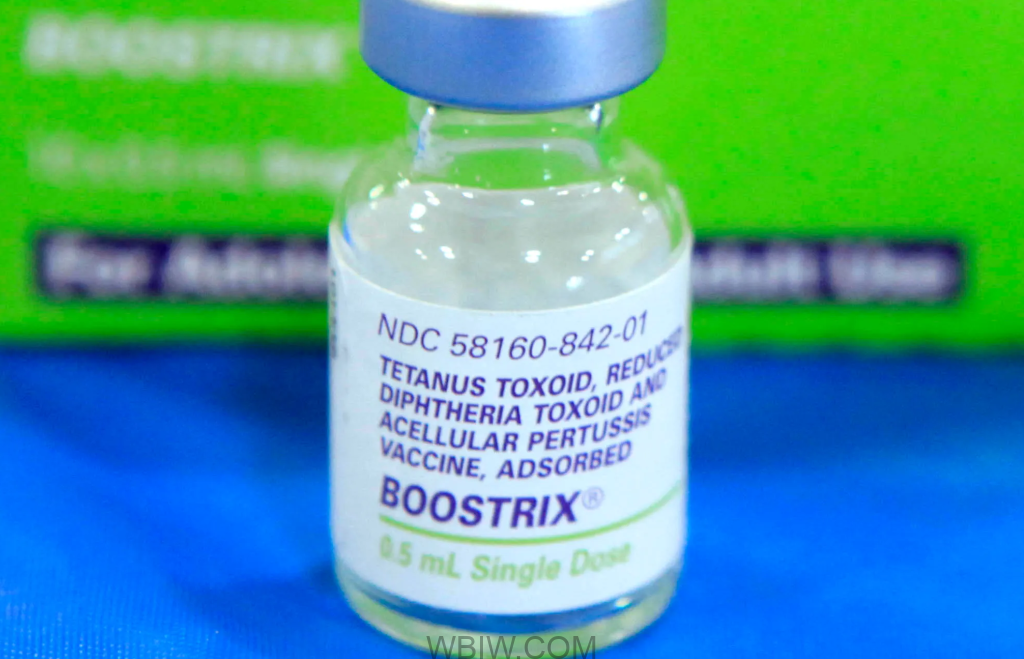
On Friday, the U.S. Food and Drug Administration approved Boostrix (Tetanus Toxoid, Reduced Diphtheria Toxoid, and Acellular Pertussis Vaccine, Adsorbed [Tdap]) for immunization during the third trimester of pregnancy to prevent pertussis, commonly known as whooping cough, in infants younger than two months of age.

“Pertussis disease is a highly contagious respiratory illness affecting all age groups. However, babies are at highest risk for getting pertussis and having serious complications from it,” said Peter Marks, M.D., Ph.D., director of the FDA’s Center for Biologics Evaluation and Research. “While vaccination is the best method for providing protection, infants younger than two months of age are too young to be protected by the childhood pertussis vaccine series. This is the first vaccine approved specifically for use during pregnancy to prevent a disease in young infants whose mothers are vaccinated during pregnancy.”
Pertussis is a common respiratory disease in the United States, resulting in frequent outbreaks. It is also called whooping cough because of the “whooping” sound that someone makes when gasping for air after a fit of coughing. Most serious pertussis cases, hospitalizations, and deaths occur in infants younger than two months of age who are too young to be protected by the childhood pertussis vaccine series.
According to the Centers for Disease Control and Prevention (CDC), 4.2% of the total cases of pertussis reported in the United States in 2021 were in infants younger than 6 months of age, and approximately 31% required hospitalization. When the Boostrix vaccine is given during pregnancy, it boosts antibodies in the mother, which are transferred to the developing baby.

Boostrix was initially approved by the FDA in 2005 as a single dose for booster immunization against tetanus, diphtheria, and pertussis in individuals 10 through 18 years of age. Subsequently, the FDA also approved Boostrix to include use in individuals 19 years of age and older and to include the use of an additional dose, 9 years or more after the initial dose of a Tdap vaccine.
The FDA’s approval of Boostrix has always included its use during pregnancy to protect the vaccinated individual. Today’s approval is specific to use in pregnancy to prevent pertussis in infants younger than 2 months of age. Since 2012, the CDC has recommended the use of Tdap vaccines during the third trimester of each pregnancy.
The determination of the effectiveness of Boostrix administered during the third trimester to prevent pertussis among infants younger than 2 months of age was based on a re-analysis of the Boostrix-relevant data from an observational case-control study of Tdap vaccine effectiveness. The FDA found these real-world data as providing real-world evidence to support this approval.

In this re-analysis, data from108 cases of pertussis in infants younger than 2 months of age (including four cases whose mothers received Boostrix during the third trimester) and 183 control infants who did not have pertussis (including18 whose mothers received Boostrix during the third trimester) resulted in a preliminary estimate of Boostrix as 78% effective in preventing pertussis among infants younger than 2 months of age, when administered during the third trimester of pregnancy. This preliminary estimate of effectiveness was updated using data from published observational studies. These statistical analyses provided estimates of effectiveness that are consistent with the preliminary estimate of 78%.
The safety of Boostrix administered during the third trimester of pregnancy was assessed in a randomized, placebo-controlled study with a non-U.S. formulation of Boostrix. The FDA considers the safety data with the non-U.S. formulation relevant because it contains the same components as the U.S. formulation of Boostrix, except that the non-U.S. formulation contains more aluminum per dose.

The study included approximately 680 pregnant individuals of whom about 340 received the non-U.S. formulation of Boostrix and of whom about 340 received saline placebo. After childbirth, the placebo recipients were then vaccinated with the non-U.S. formulation of Boostrix. The rates of reported side effects following receipt of the non-U.S. formulation of Boostrix administered during pregnancy were consistent with the rates following receipt of the non-U.S. formulation of Boostrix administered to study participants after childbirth.
The study did not identify any vaccine-related adverse effects on pregnancy or the fetus/newborn.
In previous clinical studies, the most commonly reported side effects by individuals who received Boostrix were pain, redness at the injection site, headache, fatigue, and gastrointestinal symptoms.



